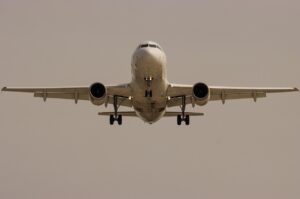 There have been several news stories recently about air travel incidents, from a radar disruption in Newark, the overturned landing at Toronto, and the midair collision near Washington, DC. These events are disturbing and scary, and they might have you wondering if air travel is still a safe mode of transportation. Without negating the tragic impact of these events, experts emphasize that air travel is still extremely safe. Here are some facts and tips to help give you peace of mind the next time you fly.
There have been several news stories recently about air travel incidents, from a radar disruption in Newark, the overturned landing at Toronto, and the midair collision near Washington, DC. These events are disturbing and scary, and they might have you wondering if air travel is still a safe mode of transportation. Without negating the tragic impact of these events, experts emphasize that air travel is still extremely safe. Here are some facts and tips to help give you peace of mind the next time you fly.
Flying remains the safest mode of transportation. Statistically speaking, you’re much safer on a plane than you are getting to the airport. There are approximately 1.13 accidents per million flights, and this is an improvement from even a decade ago which saw 1 accident per 456,000 flights. Additionally, the survival rate among passengers involved in an air accident is over 95%, according to the National Transportation Safety Board. All in, the chance of a fatality due to an air accident is around 1 in 13 million.
Learning from mistakes. When an air accident occurs, it rightfully attracts a significant amount of public attention. This includes formal investigations and reports, with recommendations and new regulations rolled out to all involved. This extensive follow-up helps ensure that the root cause is fully understood to avoid a similar issue in the future. Compare this to a car crash, which while tragic, doesn’t get near the same level of coverage or follow-through due in part to how common they unfortunately occur.
Safety procedures do work. The safety demonstration at the beginning of each flight is for your benefit, and studies have shown that it really does help in the event of an incident. Keeping your seatbelt fastened while seated and listening to flight attendant instructions is an easy way to stay safe. Even if you’re a frequent flier, each aircraft type is configured differently, so take a few seconds to understand the specific procedures.
Planes are remarkably engineered. Maintenance delays can be stressful, but double checking a potential issue prior to takeoff is all about safety. Once airborne, know that planes are remarkably engineered with redundant and backup systems. This includes an extra engine and the ability to manually lower the landing gear, if needed. While nothing can be 100% guaranteed, planes are made to correct for almost any issue.
Air anxiety is common. According to the Cleveland Clinic, approximately 25 million Americans have aerophobia, or the fear of flying. It’s normal to have some nervousness when flying, especially for the first time or after learning of a recent incident. If this includes you, just know that you’re not alone. There are many techniques for overcoming anxiety of flying including breathing and ground techniques, staying distracted with a movie or book once airborne, or talking with a seasoned traveler. Also, the more you fly, the less nervous you’ll likely feel.
The recent air accidents are tragic, but air travel remains an extremely safe mode of transportation, and even more so today compared to decades past. We hope these facts and tips help give you peace of mind the next time you fly!

 My goal is to simplify travel-planning through an equal exchange process where I acquire your ideas and expectations for your trip relieving you of the worry, hassle, stress and time that accompanies Do-It-Yourself planning.
My goal is to simplify travel-planning through an equal exchange process where I acquire your ideas and expectations for your trip relieving you of the worry, hassle, stress and time that accompanies Do-It-Yourself planning.